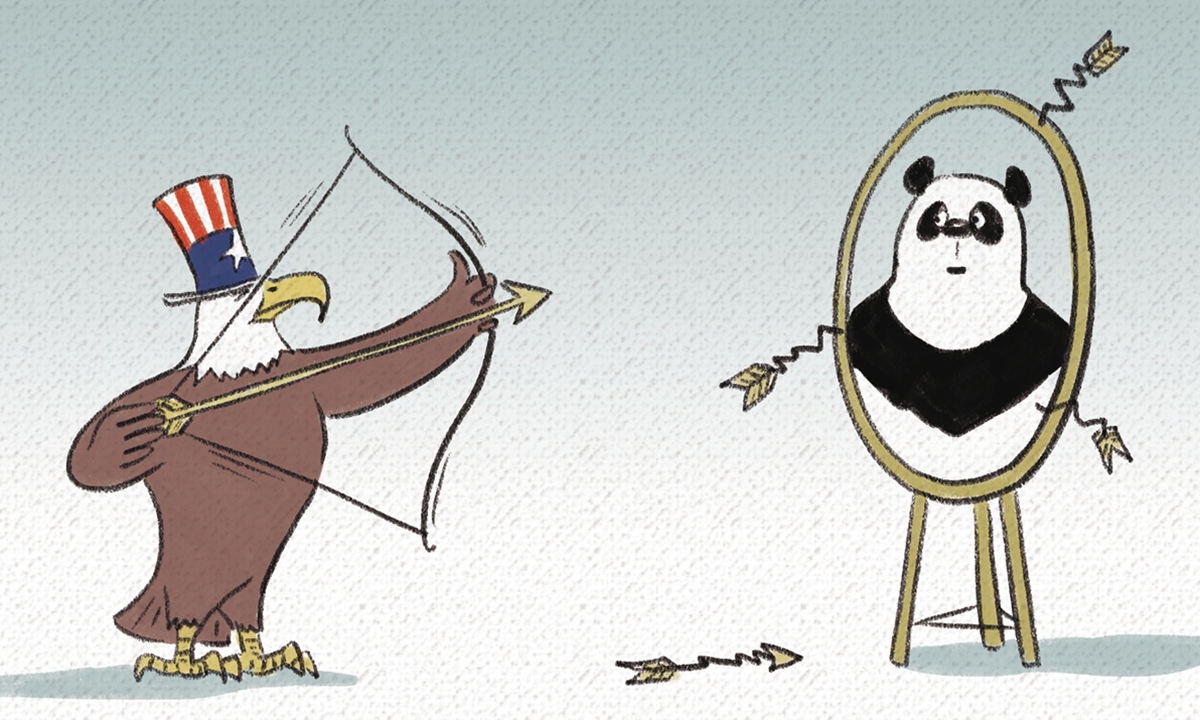US Indo-Pacific plan self-defeating as China upholds multilateralism
By Song Wei Source: Global Times Published: 2020/9/2 20:23:41

Illustration: Liu Rui/GT
Because of its important strategic position, the Indo-Pacific region has become a priority for the US diplomatic and security strategy. Nine of the world's 10 busiest seaports are located in the region with 60 percent of global maritime trade and energy transport going through both the Indian Ocean and the South China Sea.The region is also home to the world's largest and second-largest economies, the US and China, as well as developed powers and emerging countries including Japan, South Korea, Vietnam, Indonesia and Australia. Since US President Donald Trump came to power, under the context of the strategic competition between China and the US, the Indo-Pacific region and the Indo-Pacific Strategy have been given prominence. As early as November 2017, the Trump administration clearly put forward the concept of a so-called "Free and Open Indo-Pacific."
In fact, the Trump administration's Indo-Pacific strategy mainly includes three aspects: strengthening the preparation for confrontation with China; reinforcing the strategic cooperation with the allies and non-allies; and promoting networked of cooperation.
In terms of preparing for confrontation, the Trump government continues to invest more military forces into the Indo-Pacific region. These military forces are under the unified management of the US Indo-Pacific Command, which is in command of over 370,000 troops, 2,000 aircraft and more than 200 warships. This accounts for some 25 percent of the existing US military strength.
According to the US plan, the country will deploy another more than 100 fighter jets, 10 destroyers and a large number of medium-range missiles over the next decade. In 2020, the number and scale of US military exercises and reconnaissance operations in the South China Sea have significantly increased. This might result in a higher probability of occasional and small-scale conflicts between China and the US.
In terms of reinforcing the strategic cooperation with the allies and non-allies of the Indo-Pacific region, the US is consolidating strategic and military cooperation with Japan, South Korea, Australia, Vietnam and India. It is specifically exporting advanced weapons to India and encouraging it to confront China. In addition to the sales of F-35 fighter jets to the island of Taiwan, the US is also trying to deploy medium-range missiles in Japan.
South Korea has expressed interest in cooperating with the US' infrastructure initiatives in the Indo-Pacific. Indonesia is committed to promoting the ASEAN version of the Indo-Pacific strategy. Although some regional countries still keep a distance and have different views on the US' Indo-Pacific Strategic, they have begun to accept the concept.
In terms of promoting the networked cooperation in the Indo-Pacific region, the Trump administration is mainly trying to create a trilateral and multilateral cooperation mechanism. For a long time, India, Australia, and Japan have held different views about the specific form of the Indo-Pacific system. New Delhi and Canberra were previously not willing enter into an alliance against Beijing. Therefore, Washington has adopted more trilateral mechanisms, such as US-Japan-Australia and US-Japan-India structures as transitory forms.
With the rise of anti-China sentiments in both Australia and India, these trilateral mechanisms have slightly morphed to a four-nation alliance. In 2017, the security dialogue among the US, Japan, Australia and India was restarted. It was upgraded to the foreign minister's level in September 2019. By the end of 2020, the four countries will probably hold a foreign ministers' meeting and may also carry out security talks.
While the strategic construct of the Indo-Pacific region is showing an adverse trend toward China, people in the region should take this with a pinch of salt - especially China itself. Beijing should avoid overreacting and thus be unconsciously dragged into an arms race. China should stand tall. As a nuclear power, China has enough capability to safeguard its own military and national security.
India, Australia, the US and Japan also have obvious differences in interests and views in the construction of the Indo-Pacific system. As long as China continues to focus on economic development, be committed to reform and opening-up, and actively participate in processes of multilateral cooperation in the Indo-Pacific region, the US containment of China will be self-defeating.
The author is professor of international relations at Renmin University of China. opinion@globaltimes.com.cn
RELATED ARTICLES:
Posted in: ASIAN REVIEW,CHINA-US